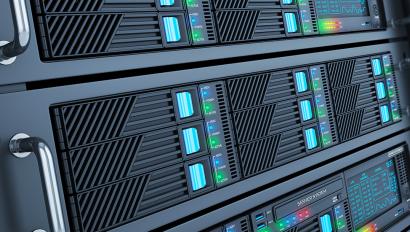Untapped Potential: How Security IoT Delivers Actionable Intelligence

Many enterprises are using data to accelerate their digital transformations, but they are slower to realize the opportunity to derive similar value by leveraging data from physical assets and related security infrastructure.
“With the Internet of Things (IoT), equipment, buildings, inventory, and other material assets become sources of actionable intelligence for business optimization.”
With the Internet of Things (IoT), equipment, buildings, inventory, and other material assets become sources of actionable intelligence for business optimization. By using existing surveillance and monitoring systems, companies can begin unlocking the value of their asset-based data in support of their strategic goals.
What Is IoT?
IoT is a network of connected physical devices that use sensors, software, GPS, tags, and other smart technology to collect information and act upon it. For example, assets linked in this way can alert their owner if they malfunction, if they have moved from their expected location, or in advance of needing regular maintenance.
The rise of cloud computing and 5G cellular service as well as the lower cost, smaller size, and greater ubiquity of sensors are making many new applications feasible. Some of this technology is already available, and more will come to market soon. These advances make it easier and more affordable to collect data from IoT devices.
Moreover, expanded connectivity and bandwidth enable higher-volume data exchange, networking of more remote assets, and greater access to real-time information. These developments open opportunities for greater efficiencies, cost savings, and value-added business insights. Juniper Research forecasts that IoT connections will more than double to 83 billion by 2024.
According to an Accenture survey, the top three reasons for enterprises to adopt IoT are equally weighted among:
- Safety and security
- Optimizing operations
- Quality assurance
How to Leverage IoT for Business Security
Companies can harness their existing business security technology infrastructure to generate powerful intelligence from physical assets with IoT technology. This does not necessarily require replacing equipment because you can retrofit sensors in many cases.
Capabilities from security solutions, such as video analysis and geolocation tracking, enrich this information with valuable context, making IoT data more actionable.
“Investment in security becomes much more than an obligatory cost; it adds significant value to the business. The benefits include improvements in efficiency, quality, cost, and customer service.”
As a result, your investment in security becomes much more than an obligatory cost; it adds significant value to the business. The benefits include improvements in efficiency, quality, cost, and customer service.
IoT Use Case: Manufacturing
The so-called fourth industrial revolution, often described as Industry 4.0, is the top growth area for IoT. In manufacturing, the leading applications for IoT are monitoring production, automation, planning, quality, and compliance.
- Equipment optimization is a popular use case. With internet-enabled sensors, operators can learn: Why equipment malfunctions so owners can prevent costly downtime
- If capital assets are sitting idle, signalling excess capacity and opportunities to reduce fixed costs
- When machines hit maintenance intervals, allowing companies to do maintenance most efficiently at scale
IoT Use Case: Logistics
Tracking goods and assets in motion presents a major challenge. Logistics teams need to know the location and condition of inventory as well as the vehicles that carry these assets. In the absence of this data, companies risk delays, waste, lost sales, customer dissatisfaction, and liability.
With IoT and monitoring technology already in place for security, logistics managers and fleet operators can have real-time answers to questions such as:
- Are drivers obeying speed limits and stopping for mandatory breaks?
- Will goods arrive on time?
- Are products being kept at the required temperature and humidity?
IoT Use Case: Retail
The leading applications of IoT in retailing are supply chain optimization, surveillance, retail security systems, and inventory management. Brick-and-mortar store operators want to decrease theft, improve retail loss prevention, have the right products on hand, and improve customer satisfaction.
IoT technology enables smart shelves that can address these challenges. Products have RFID tags, and monitoring solutions detect when the shelf is running low. The system automates replenishment.
From this data, the retailer can discover the optimal stock levels for individual locations and the best cadence for replenishment. This information leads to more efficient use of capital, makes sure shoppers find the items they seek, and enables the retailer to anticipate demand trends.
Where Can IoT Take You?
“Technological advances are opening our eyes to opportunities for businesses to leverage asset security frameworks for valuable intelligence.”
Technological advances are opening our eyes to opportunities for businesses to leverage asset security frameworks for valuable intelligence. Leaders realize that security is no longer only a cost centre but a driver of competitive advantage. Discover the solutions that can help you safeguard your assets.
Disclaimer: By using the Blog section of this website (“Blog”), you agree to the terms of this Disclaimer, including but not limited to the terms of use and our privacy policy. The information provided on this Blog is for information purposes only. Such information is not intended to provide advice on your specific security needs nor to provide legal advice. If you would like to speak to a Security representative about your specific security needs, please contact us.























